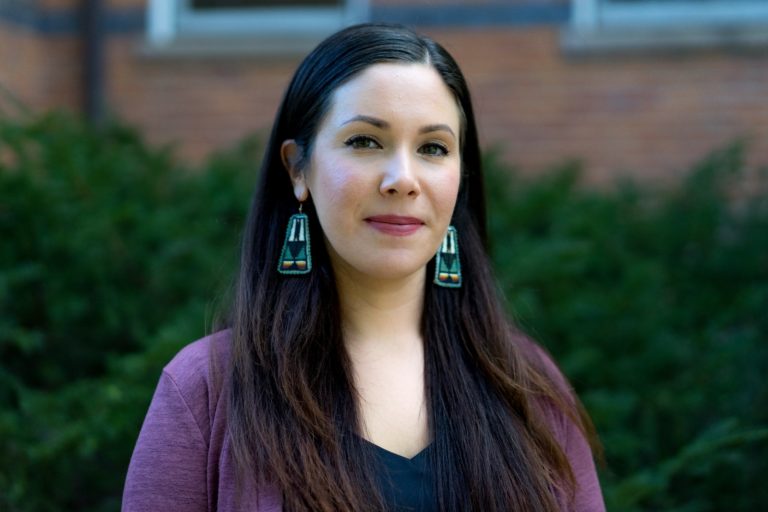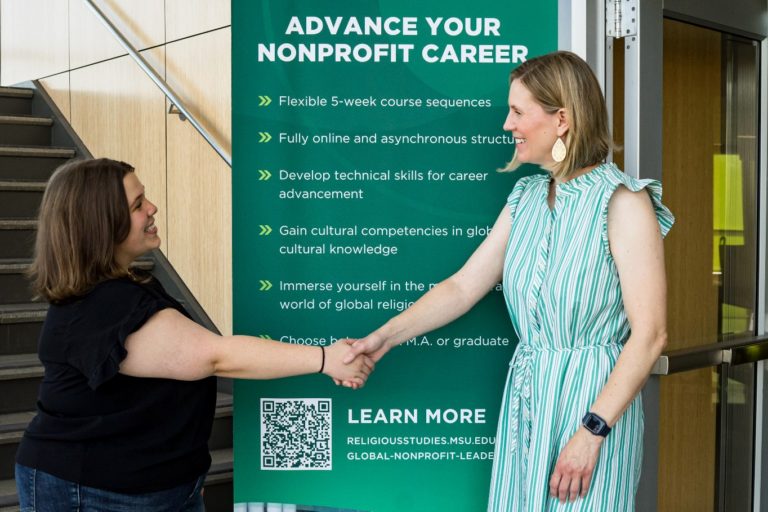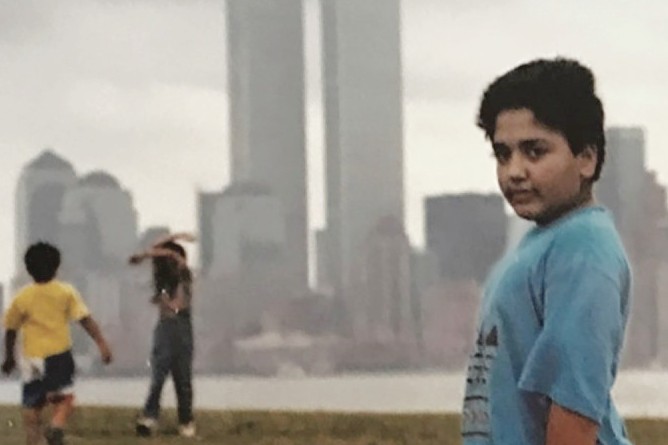A Kalamazoo woodcut printmaker and teacher is the 2023 Artist-in-Residence for Michigan State University’s W.K. Kellogg Biological Station in Hickory Corners, Michigan.
Launched by MSU in Summer 2022 in an effort to promote art and science collaborations, the Farmscapes to Forests: Kellogg Biological Station (KBS) Long-Term Ecological Research (LTER) Artist-in-Residence Program is now in its second year and will host Trevor Grabill from Flat Mountain Press June 12-18 as the 2023 Artist-in-Residence.

According to Gretel Van Wieren, Professor of Religious Studies at MSU who spearheaded the artist-in-residence program in collaboration with KBS LTER Education and Outreach Coordinator Elizabeth Schultheis and KBS LTER Science Coordinator Nameer Baker, the selection committee was impressed by Grabill’s interest in engaging the data of the researchers’ experiments to create a visual folk tale through art that communicates the underlying narrative of the research.
“Trevor had an interest not only in representing the natural habits and aesthetic aspects of KBS but also in really engaging some of the specific scientific experiments going on there,” Van Wieren said. “A unique aspect of Trevor’s art was welcoming the change to an informed approach – looking at, for instance, plants that thrive alongside agriculture, or the relationship between pollinators and a changing botanical world that KBS focuses on.”
Paying Attention to the Strange and Beautiful
As a printmaker, Grabill takes inspiration from “strange and beautiful” glimpses of nature that can be found in the most unlikely places – parking lots, abandoned buildings, and other spaces we tend to pass by.
“I look for what’s happening there, the strange spaces of beauty that get reduced to a drive-by or passed-by space. Things that are not inevitable at all, but get reduced to the mundane,” Grabill said. “What I’m looking for when I’m at KBS is to similarly highlight how deeply strange and beautiful the spaces and organisms are that scientists are working with there.”
“What I’m looking for when I’m at KBS is to similarly highlight how deeply strange and beautiful the spaces and organisms are that scientists are working with there.”
Trevor Grabill
What Grabill ultimately tries to do through art is share curiosity and excitement about the world around us. “Just paying attention” to what is there, rather than making assumptions. In fact, Grabill interprets the wood carving process as a collaboration with the wood.
“The tree was a living being and the grain varies, both from species to species and from individual piece of wood to piece of wood. So, I think of each wood carved piece as a collaboration between what I have in mind and what the wood has in mind, and so we meet in the middle,” Grabill said. “I don’t necessarily always follow what I feel the wood is trying to tell me to do, but I think of it as a collaboration with another organism.”

Grabill’s process of relief printmaking follows a method of creating hand-carved stamps of various sizes by first drawing images into a sketchbook and then tracing those images onto a wood block, which then is carved before filling the block with ink and putting it through a small press. While working with intention, Grabill can still often be surprised by the results.
Collaborations Between Science and Art
Growing up in central Michigan and teaching at the Kalamazoo Institute of Arts, Grabill has lived and worked in Kalamazoo for about 10 years but never expected to work at KBS, which Grabill describes as “a jewel of the community.”
During the residency, Grabill plans to spend time with KBS scientists in their labs, talking with them about their work. Grabill’s goal is to convey the essence of the research in a way that is easily understood by the general public through art. Grabill also wants to allocate time to wander around the farmscapes, prairies, forests, and lakes surrounding the bio station, taking note of what seems strange and beautiful.
“These programs help humanize the science and expand the public reach of the long-term ecological research that’s happening at these places.”
Grabill has a BFA in Graphic Design from Central Michigan University and lived at CMU’s biological station on Beaver Island right after high school, working as a cook. Grabill’s father also was a middle school teacher who studied at CMU’s bio station during college and took a group of 8th-grade students there each summer.
While Grabill’s 2023 summer calendar is full of art shows in Chicago, Detroit, and Traverse City, Grabill plans to visit KBS periodically during the summer after the residency in June. In addition, Grabill would like to present a show and talk at the KBS campus in the fall.
Supported by the National Science Foundation, KBS is one of 28 long-term ecological research (LTER) sites in the United States. Yet, not all LTER sites have an artist-in-residence program.

Van Wieren herself has worked at other LTER sites, which is what inspired her to help bring the artist-in-residence program to KBS. She was the 2022 Artist-in-Residence at the Cedar Creek Ecosystem Science Reserve LTER at the University of Minnesota and the 2015 Writer-in-Residence at the H.J. Andrews Experimental Forest Long-Term Ecological Reflections at Oregon State University.
While Van Wieren says her experience as an artist-in-residence at other LTER sites has been personally rewarding, she also sees the real value of science and art collaborations like these to provide the broader community with access to what oftentimes is impenetrable in terms of scientific research.
“These programs help humanize the science and expand the public reach of the long-term ecological research that’s happening at these places,” she said. “Another value is the building of community at the bio stations. Artists interact with scientists and scientists see their work or themselves in new ways that may generate new insights. It’s been exciting and gratifying to see how focusing on art at KBS has really sparked a lot of interest, not only from researchers but from students. There’s just a real interest to make these bridges between arts and humanities with environmental and biological science.”
Written by Lynn Waldsmith


